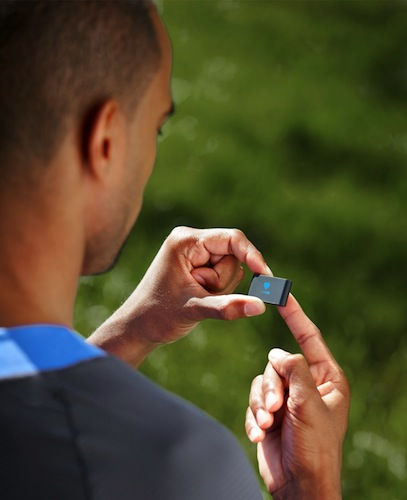 By Brian Dolan
By Brian Dolan
Four years ago a keynote speaker at the American Medical Informatics Association meeting in Washington D.C. made a provocative prediction about the near-future importance of patient generated health data:
"I think it's not that bold to say that in five years the kind of things I was showing you are going to put us in a position where the vast majority of information that a doctor might use to determine how a patient is doing will be things that are collected outside of that doctor's office," Gregory Abowd, Distinguished Professor, School of Interactive Computing Georgia Tech, told AMIA 2011 attendees. "The technologies of ubiquitous computing are very well positioned to make this a reality... you need to recognize that this transition is going to happen, and -- it's OK to handle the problem of electronic medical record deployments in family physicians across the US and the health information exchange channels that reside there -- but do not forget the point that much of the data that might be relevant to the medical record of an individual is going to be accumulated in their homes and elsewhere."
Abowd's research into text message-based patient engagement and connected home systems helped lead him to these predictions. While it may take more than two more years, Abowd's 2011 keynote address is poised to be prophetic. Since then there has been a growing recognition of the importance of patient generated health data -- even leading to serious discussions about including requirements for it in future Meaningful Use stages.
Last year the always pioneering Veterans Health Administration threw its weight behind this trend's increasingly inevitable rise.
“The future is PG[H]D – patient-generated [health] data,” Dr. Susan Woods, director of patient experience for connected health at the Veterans Health Administration said last summer. “The voice of the patients and the caregivers has never been louder.”
 Clinicians who resist growing demand to cede some of their authority and to accept health data from patients would be wise not to ignore changing expectations, for the sake of better care, Woods suggested. “Transparency breeds trust. Trust between patients and clinicians breeds outcomes,” she said.
Clinicians who resist growing demand to cede some of their authority and to accept health data from patients would be wise not to ignore changing expectations, for the sake of better care, Woods suggested. “Transparency breeds trust. Trust between patients and clinicians breeds outcomes,” she said.
Patients with chronic conditions have long understood that what happens between doctor visits is often just as or even more important than what happens during them.
“I see my doctors as consultants,” Anna McCollister-Slipp, Co-Founder of Galileo Analytics told attendees at the mHealth Summit last year. “They don’t manage my disease, I do. I make dosing choices 24-7, where I’m constantly evaluating what the data from my blood glucose monitor says. Whether or not I’m going to go to the gym or where or not I’m going to go to lunch. I make decisions about how much insulin to take and diabetes is taking an extreme example, just because insulin is lethal if you get it wrong, but everybody in many respects needs to be doing the same kind of thing and ultimately will be as we continue to live longer.”
Thanks to changing payment models and increased focus on accountable care, more providers are investigating the use of population health management platforms that help them stay in touch with their patients between visits. While most of these currently employ relatively simple, health risk assessment-like surveys via texts or secure portals, the opportunity for adding data from personal health devices and, in some cases, even lifestyle tracking devices is of increasing interest, too.
 Health researchers have recently begun to incorporate off-the-shelf, smartphone-enabled personal health devices in large scale studies. UCSF's Health eHeart initiative is one high profile example along with the Wired for Health trial at Scripps Translational Science Institute in partnership with Qualcomm. Many expect that the results of initiatives like these will not only produce meaningful clinical data, but could also indirectly help convince providers that the data generated by personal health devices are worth considering as part of their own conversations with patients.
Health researchers have recently begun to incorporate off-the-shelf, smartphone-enabled personal health devices in large scale studies. UCSF's Health eHeart initiative is one high profile example along with the Wired for Health trial at Scripps Translational Science Institute in partnership with Qualcomm. Many expect that the results of initiatives like these will not only produce meaningful clinical data, but could also indirectly help convince providers that the data generated by personal health devices are worth considering as part of their own conversations with patients.
Rob McCray, President and CEO of the Wireless-Life Sciences Alliance, told MobiHealthNews a few months ago that patient generated data is becoming an essential part of healthcare.
“In my opinion, the core issue is that HIT systems of the future must adapt to enable the use of data that is generated by patients when they are not in the clinic,” he wrote. “Patient engagement in their own health and wellbeing is central to plans to decrease the cost of health care and improve population health. HIT systems that do not support these developments should be obsolete and certainly should not be supported by taxpayers.”


















